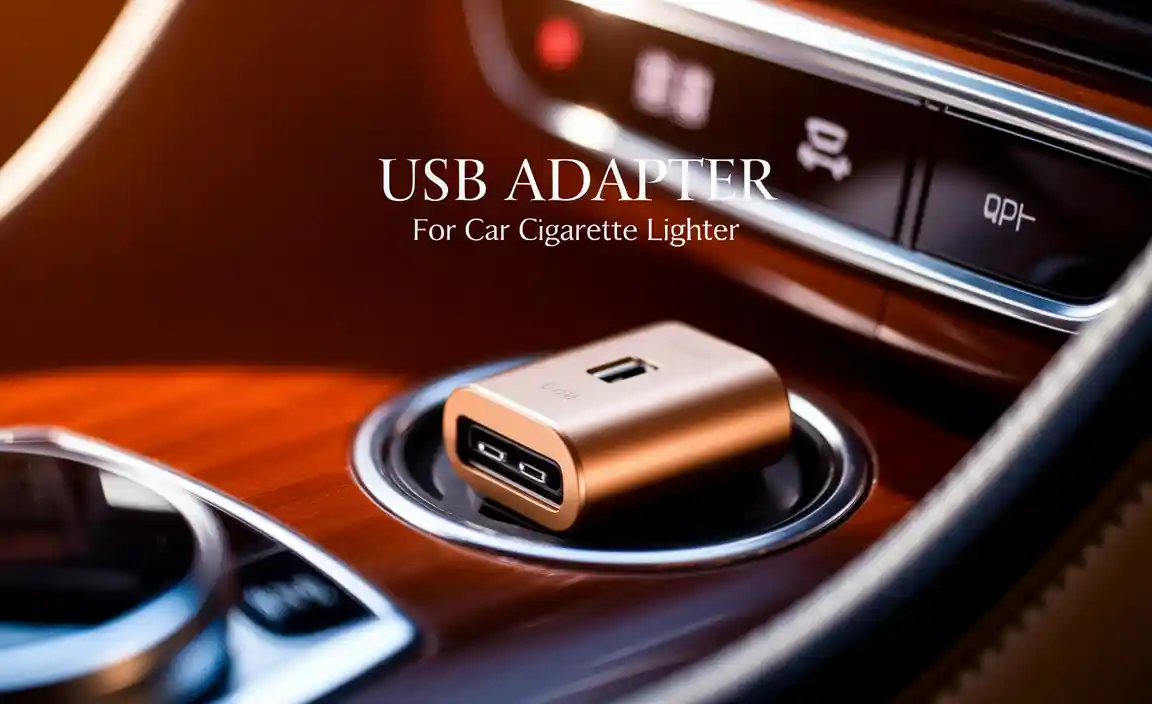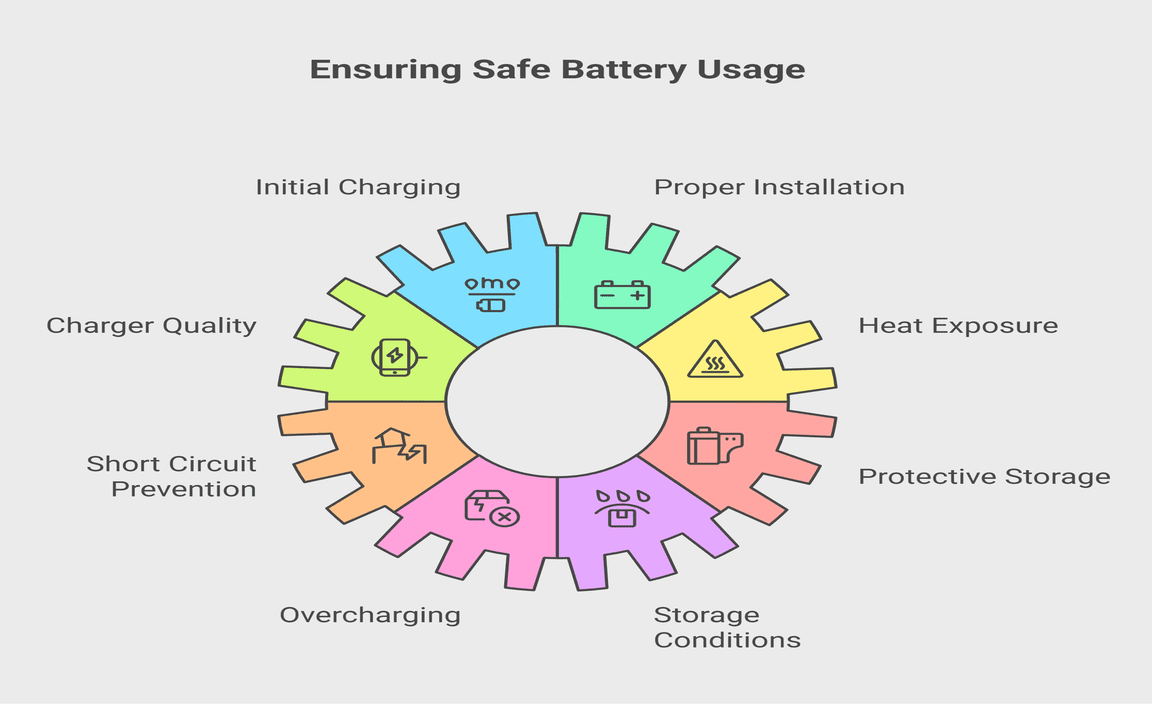A plug adapter for a light socket is a handy gadget that lets you plug in small appliances or devices into a standard light fixture, turning it into a convenient power outlet. It’s a simple yet brilliant fix for adding power where you need it most, without needing to hire an electrician.
Lights are everywhere in our homes, and sometimes we just need a quick power source for things like a fan, a phone charger, or a small lamp. But what if there isn’t an outlet nearby? That’s where a plug adapter for a light socket comes in. It’s a clever little device that lets you turn a light fixture into an instant power point. Think of it as a temporary extension cord, but without the hassle of running wires or needing a whole new outlet. It’s a problem solver for those moments when you need a little juice in an unexpected place. Don’t worry if this sounds a bit technical; I’m here to break it down so you can easily understand how to use one safely and effectively. We’ll explore what these adapters are, how they work, and why they’re such a genial fix for everyday power needs.
What Exactly is a Plug Adapter for a Light Socket?
At its core, a plug adapter for a light socket is a simple adapter that screws directly into a standard light bulb socket. It has a socket or outlet on its side, allowing you to plug in a standard appliance cord. This transforms your light fixture into a dual-purpose item: it still holds your light bulb to provide illumination, and it now also offers an electrical outlet for other devices. They are incredibly useful for temporary needs in places where a permanent outlet isn’t available or practical.
Imagine you’re setting up a temporary workspace in a corner of a room where the only power source is a ceiling light. Instead of running extension cords across the floor, you can use a light socket adapter to plug in your desk lamp and charge your phone right there. These adapters are designed to be straightforward, making them accessible even for those who aren’t very handy with electrical work. They work by tapping into the existing electrical current that powers the light bulb and rerouting a portion of it safely to the adapter’s outlet.
How They Work: The Simple Science
Understanding how these adapters function is key to using them with confidence. When you screw an adapter into a light socket, the metal prongs on the adapter make contact with the electrical contacts inside the light socket. These contacts are connected to your home’s wiring. The adapter then has its own electrical connections that lead to the outlet on its side. So, when the light switch is on, electricity flows to both the light bulb (if one is installed) and the adapter’s outlet. It’s a straightforward electrical connection, much like plugging any other device into the wall.
The beauty of these adapters lies in their simplicity. They don’t require any rewiring or complex installation. You simply replace the light bulb with the adapter, and then you can plug in your device. It’s designed to be a plug-and-play solution. However, it’s crucial to remember that you’re dealing with electricity, so safety should always be your top priority. We’ll cover safety precautions later in this guide.
Why Use a Plug Adapter for a Light Socket? The Benefits
The appeal of a plug adapter for a light socket is multifaceted. They offer practical solutions to common household challenges. Let’s look at the main reasons why people turn to these ingenious little devices:
Convenience and Accessibility
The most significant advantage is the sheer convenience they offer. Need to power a fan in the attic where there are no outlets? Dealing with a draft and want to plug in a small heater near a window that only has a light fixture? A light socket adapter provides an instant power solution that’s incredibly easy to access. You can quickly add a power point in a location that would otherwise be difficult or expensive to wire.
Cost-Effectiveness
Installing a new electrical outlet can be a costly endeavor, often requiring a qualified electrician. A plug adapter, on the other hand, is a very inexpensive purchase. For just a few dollars, you can achieve the same goal of adding a power access point in a temporary or hard-to-reach location. This makes them an excellent DIY solution for budget-conscious individuals.
Temporary Power Solutions
These adapters are perfect for situations where you need power for a limited time. For example, if you’re decorating and need to plug in a sander or a tool, or if you’re hosting guests and need an extra spot to charge devices, a light socket adapter can be quickly deployed and removed when no longer needed. This avoids permanent modifications to your home’s electrical system.
Versatility
While primarily used for adding a standard outlet, some specialized adapters can also convert a light socket to hold multiple bulbs, or even to accommodate different types of bulbs. However, the most common type is the one that provides a standard plug receptacle.
Types of Plug Adapters for Light Sockets
Not all light socket adapters are created equal. While the basic function remains the same—turning a light fixture into a power source—they can vary in design and capability. Understanding these variations can help you choose the right one for your needs.
Standard Outlet Adapters
These are the most common type. They screw into a standard E26/E27 (medium screw base) or E12 (candelabra base) light socket and feature a standard NEMA 1-15R or NEMA 5-15R outlet on the side. These are perfect for plugging in everyday household items.
Multi-Bulb Adapters
Some adapters are designed to allow you to install multiple light bulbs in a single socket. For example, a “1-to-3” or “1-to-4” adapter will screw into one socket but have three or four sockets of its own, allowing you to increase the light output from a single fixture. While not strictly for powering appliances, they highlight the versatility of socket modification.
Switched Outlet Adapters
A less common but useful variation is an adapter that includes its own small switch for the outlet. This gives you an extra layer of control over the power being supplied to your plugged-in device.
It’s essential to check the type of light socket you have and the type of plug your appliance uses when selecting an adapter. Most household lights use the medium screw base (E26/E27), but some lamps might use a smaller candelabra base (E12).
How to Safely Use a Plug Adapter for a Light Socket: Step-by-Step
Using a plug adapter for a light socket is generally straightforward, but safety is paramount. Always remember that you are working with electricity. Follow these steps to ensure you use it correctly and safely:
Step 1: Turn Off the Power
This is the most critical step. Before you do anything, locate the light switch that controls the fixture you’ll be using and turn it OFF. For maximum safety, especially if you’re unsure, you can also turn off the corresponding breaker at your home’s electrical panel. This ensures that no electricity is flowing to the socket while you’re working with it.
Step 2: Remove the Light Bulb
Once the power is confirmed to be off, carefully unscrew the existing light bulb from the socket. Hold it by the glass part (if it’s cool enough) and twist it counter-clockwise until it comes free. Place the bulb aside in a safe place.
Step 3: Screw in the Adapter
Take your chosen plug adapter for a light socket. Carefully align the threaded base of the adapter with the light socket. Gently screw it in clockwise, just as you would a light bulb. Make sure it’s snug but don’t overtighten it. It should feel secure.
Step 4: Install a Light Bulb (Optional but Recommended)
If you still want light from the fixture, screw in a compatible light bulb into the adapter’s socket. It’s a good idea to use a bulb with a lower wattage than what the fixture is rated for, especially if you plan to plug in a device that draws significant power. This helps prevent overloading the circuit. Check the maximum wattage rating for both the light fixture and the adapter.
Step 5: Plug in Your Device
Now, carefully plug your appliance or device into the outlet on the adapter. Ensure the device’s plug is fully seated in the adapter’s socket.
Step 6: Turn the Power Back On
Go back to the light switch and turn it ON. If you installed a light bulb in the adapter, it should illuminate. Your plugged-in device should now also receive power.
Important Safety Considerations:
- Never exceed the wattage limit: This is crucial. Light fixtures and adapters have maximum wattage ratings. Plugging in devices that collectively exceed this limit can cause overheating, damage, or even fire. For example, if your fixture is rated for 60W and you use a 40W bulb, you should only plug in a device that draws 20W or less.
- Use for compatible devices: These adapters are generally intended for low-power devices such as phone chargers, small fans, or desk lamps. Avoid using them for high-power appliances like space heaters, microwaves, or hair dryers, as these can easily overload the circuit.
- Check for damage: Before each use, inspect the adapter and the light socket for any signs of damage, such as cracked plastic, frayed wires, or bent metal contacts. If any damage is found, do not use the adapter.
- Dry environment: Always use these adapters in dry locations. Moisture and electricity are a dangerous combination.
- Don’t overload the circuit: Remember that the light fixture is usually on a circuit shared with other outlets and lights in the room or even other rooms. Running a high-power device through a light socket adapter, even if it’s within the adapter’s and fixture’s limits, can still trip the breaker if the overall circuit is overloaded.
- Not for permanent use: These adapters are best suited for temporary or occasional use. For a permanent power solution, professional electrical work is recommended.
What to Consider When Buying a Plug Adapter for a Light Socket
Choosing the right adapter means looking beyond just its ability to plug into a light socket. Here are some factors to keep in mind to ensure you get a safe and effective product:
Socket Type Compatibility
As mentioned, light sockets come in different sizes. The most common in North America is the E26 (medium screw base). Candelabra bulbs use smaller E12 sockets. Ensure the adapter you buy matches the socket in your fixture. Look for clear labeling on the product packaging.
Outlet Type
The adapter will have an outlet where you plug in your device. Most adapters provide a standard NEMA 1-15R outlet (two flat slots) or NEMA 5-15R (two parallel slots and a round ground pin). Make sure it accommodates the plug type of the devices you intend to use. For safety and best practice, always opt for an adapter with a grounding pin if your device has a three-prong plug and the adapter provides a grounded outlet.
Maximum Wattage Rating
This is critical for safety. The adapter will have a maximum wattage rating, and so will your light fixture. You must ensure that the combined wattage of the light bulb and any appliance plugged into the adapter does not exceed the lowest wattage rating between the fixture, the adapter, and the circuit breaker. Many adapters designed for low-draw devices will have ratings around 250-300W. This usually means you can use a lower-wattage bulb (e.g., 15-40W LED) and still have enough capacity for a phone charger or a small fan.
Build Quality and Safety Certifications
Look for adapters made from durable, heat-resistant materials. Reputable brands will often have safety certifications from organizations like UL (Underwriters Laboratories) or ETL. These certifications indicate that the product has been tested and meets specific safety standards. You can often find this information on the product packaging or the item itself. For guidance on electrical safety standards, the UL website is a great resource.
Intended Use
Consider what you’ll be powering. For simple tasks like charging a phone, a basic adapter with a low wattage rating is fine. If you need slightly more power, ensure the adapter and your fixture can handle it. Again, avoid high-draw items like heaters or hair dryers unless the adapter’s specifications (and your home wiring) explicitly state it’s safe, which is rarely the case for light socket adapters.
Troubleshooting Common Issues
Even with simple devices, you might encounter a snag. Here are a few common issues and how to fix them:
Issue: No Power to the Adapter Outlet
Possible Causes:
- The light switch is off.
- The light bulb is burned out (some adapters require a bulb to function).
- The adapter is not screwed in properly.
- The circuit breaker has tripped.
- The device plugged in is faulty.
Solutions:
- Ensure the light switch is ON.
- Check and replace the light bulb if it’s burned out.
- Make sure the adapter is securely screwed into the socket.
- Check your home’s electrical panel and reset the breaker if necessary.
- Try plugging a different, known-working device into the adapter outlet.
Issue: Light Bulb Flickers
Possible Causes:
- Loose connection in the socket or adapter.
- Incompatible bulb type (e.g., using a dimmable bulb in a non-dimmable fixture or vice-versa).
- Overloaded circuit.
Solutions:
- Turn off power and gently re-seat the adapter and the light bulb.
- Ensure the bulb is compatible with your fixture and adapter.
- Reduce the load on the circuit if possible. You might need to use a lower-wattage bulb.
Issue: Adapter Feels Warm to the Touch
Possible Causes:
- Normal operation for a small amount of heat generated by electricity.
- Overloading the adapter or fixture.
- Faulty adapter.
Solutions:
- Slight warmth is often normal, especially if the light is on and a device is plugged in. However, if it feels excessively hot, turn off the power immediately.
- Turn off the power and unplug the device. Ensure the total wattage of the bulb and the plugged-in device is well within the limits.
- If the adapter is excessively hot and you are not overloading it, it might be faulty. Discontinue use and replace it.
Remember, if you ever feel unsafe or are unsure about troubleshooting, it’s always best to consult a qualified electrician. For less than the cost of a service call, you can often purchase a new, safe adapter and ensure your home’s wiring is in good condition. Resources like the Electrical Safety Foundation International (esfi.org) offer valuable safety tips.
When NOT to Use a Plug Adapter for a Light Socket
While incredibly useful, these adapters are not a universal solution. There are specific situations where using one is a bad idea:
High-Wattage Appliances
As we’ve emphasized, high-draw appliances like space heaters, toasters, hair dryers, and power tools can draw a lot of current. Standard light circuits and socket adapters are not designed to handle this kind of load safely. Overloading can lead to blown fuses, tripped breakers, melted adapter components, or even a fire. For these devices, you absolutely need a dedicated outlet.
Wet or Damp Locations
Never use a light socket adapter in bathrooms, kitchens (near sinks unless specifically rated for it), garages, outdoors, or any other area where moisture is present. Electricity and water are a dangerous mix, and using adapters in such environments significantly increases the risk of electric shock or short circuits.
Damaged or Old Fixtures
If your light fixture is old, appears damaged, or has loose wiring, do not use a plug adapter. The adapter relies on a sound connection with the fixture, and a compromised fixture compromises the safety of the entire setup. It’s better to have old fixtures repaired or replaced by a professional first.
Extension Cord Purposes
These adapters are not designed to be a substitute for extension cords for moving power across a room or to distant locations. They are meant to provide a single, nearby power point. Relying on them as permanent extension cords is unsafe.
When the Existing Circuit is Already Heavily Loaded
Even if the adapter and bulb wattage are within limits, if the electrical circuit powering that light fixture is already running multiple other appliances at or near capacity, adding another load via the adapter could still overload the circuit and trip the breaker.
For Permanent Installations
These are temporary




